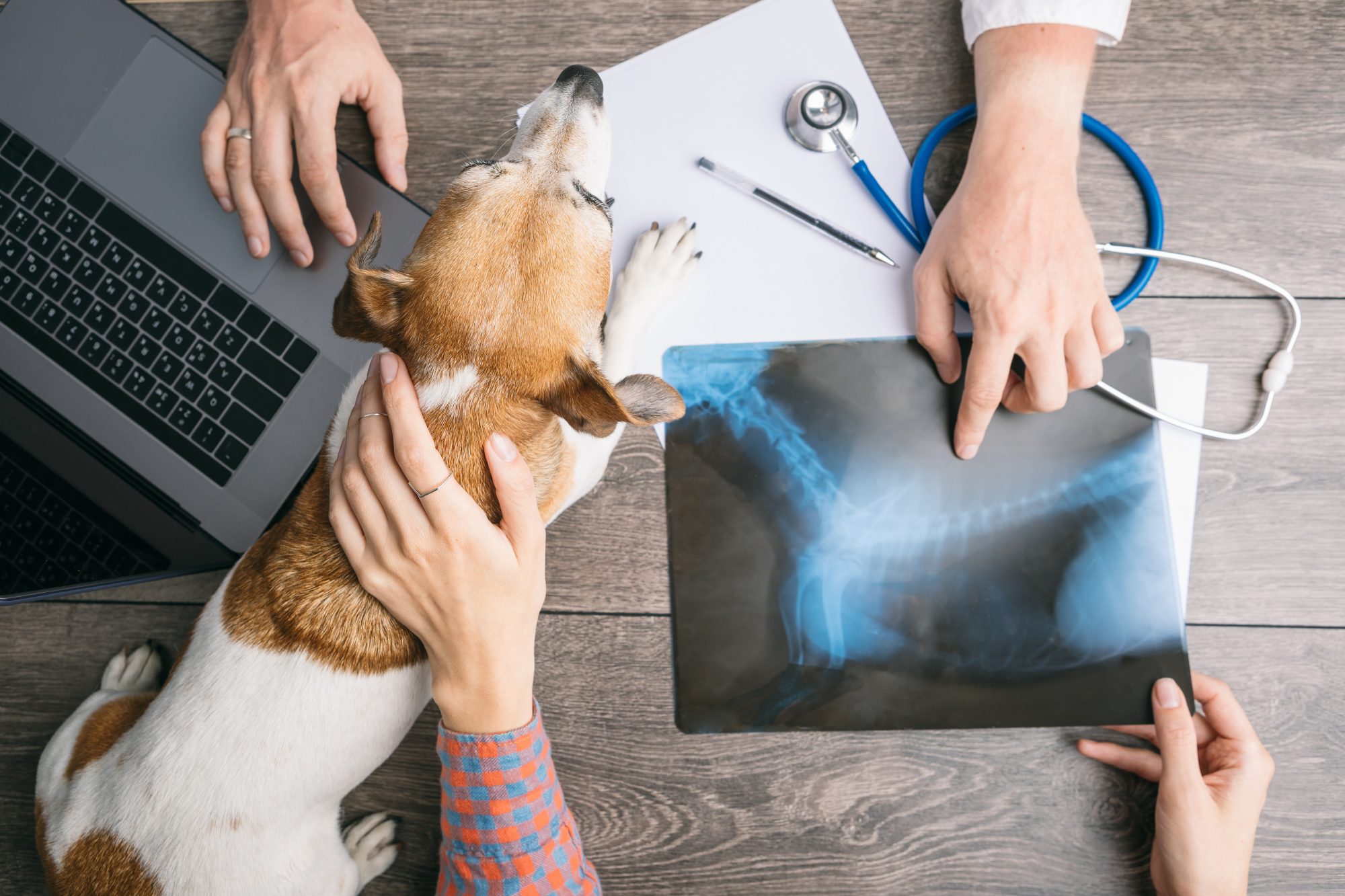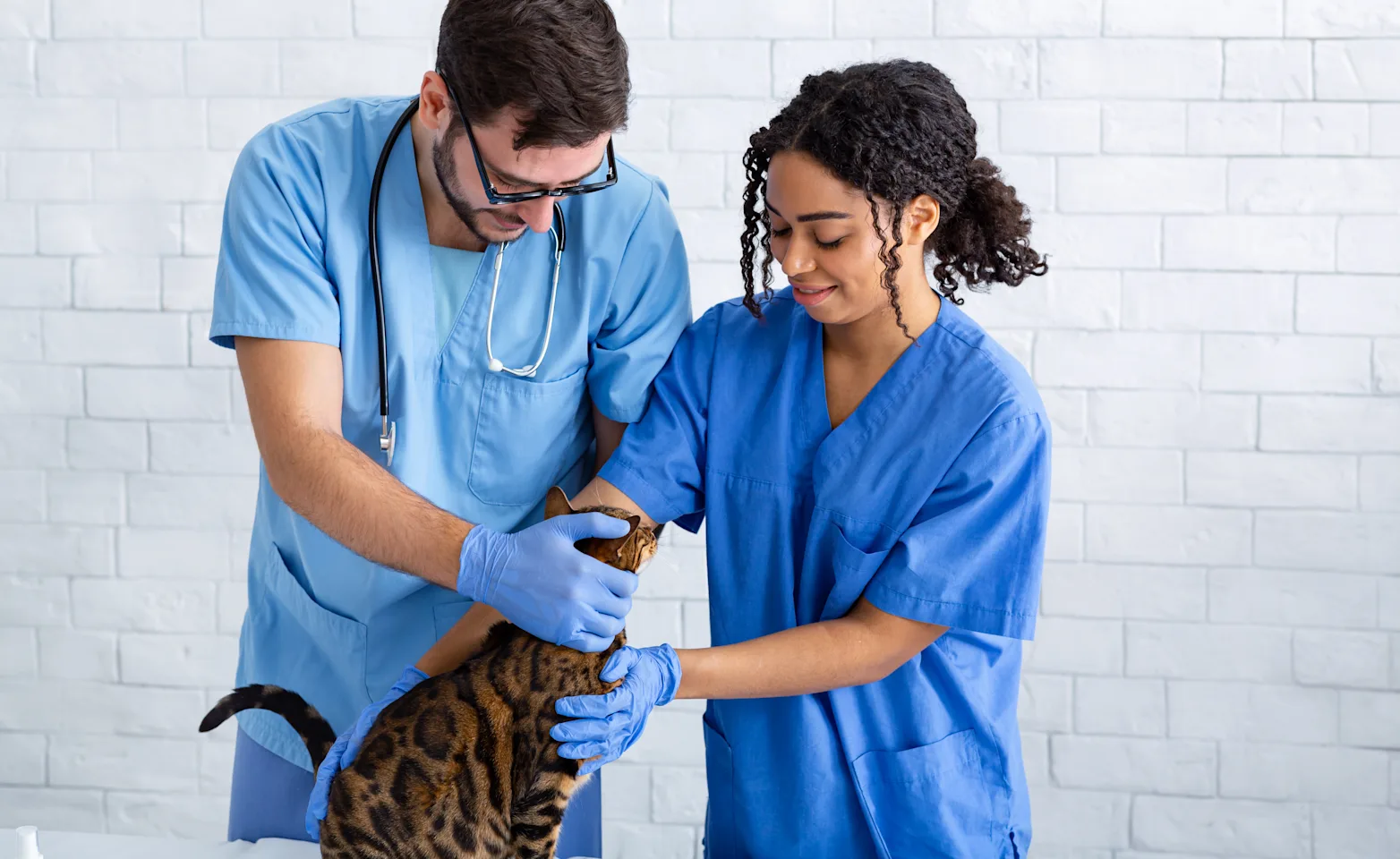When Every Second Counts: How an emergency vet Can Make All the Difference
Wiki Article
Why Pet Rehabilitation Is Critical: the Benefits of Vet Providers for Your Pet's Recuperation
Pet recovery is a crucial component of recuperation for pet dogs facing injuries or specials needs. Vet services supply essential support via customized recovery strategies that address private demands. These plans typically include pain management, physical treatment, and nutritional advice. Recognizing the numerous facets of animal rehabilitation can brighten its importance in boosting recuperation results. What details benefits do these solutions offer, and how can they change a pet dog's healing journey?Comprehending Pet Rehab
Animal recovery incorporates a series of restorative methods targeted at recovering the wellness and functionality of injured or handicapped animals. This area integrates numerous strategies, consisting of physical treatment, hydrotherapy, and job-related therapy, tailored to meet the certain needs of each animal. Rehabilitation professionals evaluate an animal's problem, creating personalized treatment strategies that might involve exercises to reinforce muscular tissues, improve wheelchair, and improve total health. The procedure not only focuses on physical recovery however also addresses emotional and behavioral aspects. Pets usually experience tension and stress and anxiety complying with an injury, making mental health factors to consider essential in rehabilitation. By developing a supportive setting, therapists can help animals regain their self-confidence and adapt to their brand-new circumstances. With routine sessions, pets can experience considerable renovations, eventually resulting in a better top quality of life. Generally, understanding pet rehab highlights its relevance in advertising healing and improving the bond in between family pets and their owners.
The Role of Discomfort Monitoring in Recovery
Just how necessary works pain administration in the recovery of damaged animals? It plays an important duty in helping with recovery and improving the general health of family pets. Correct discomfort management not only relieves pain yet likewise advertises wheelchair, enabling pets to take part in rehabilitation tasks needed for recuperation. When pain is efficiently taken care of, animals have a tendency to react positively to treatment, bring about quicker recovery outcomes.Veterinarians utilize various techniques to assess and attend to discomfort, consisting of medications, acupuncture, and different treatments. By customizing pain monitoring strategies to the individual demands of each pet, veterinarians can ensure that pets continue to be calm and participating throughout their recovery journey. Reducing discomfort assists reduce stress and anxiety, which can prevent recovery and extend recuperation times. To sum up, effective discomfort management is crucial for improving the recovery process and enhancing the top quality of life for hurt pets.Physical Therapy Strategies for Family Pets
Countless physical treatment methods are offered to help in the recovery of animals recuperating from injuries or surgical procedures (tplo surgery for dogs). These techniques can boost movement, relieve pain, and promote recovery. Therapeutic workouts, for circumstances, help reinforce muscle mass and improve joint function, permitting family pets to regain their physical capabilities gradually. Hands-on therapy, which includes massage therapy and mobilization, can minimize tension and boost flow, adding to a faster recovery.Other methods such as passive variety of activity workouts urge joint versatility and minimize rigidity. Furthermore, electric excitement treatment may be employed to promote nerves and muscle mass, promoting healing and pain relief.Veterinary professionals typically customize these techniques to each pet dog's particular requirements, ensuring a detailed rehab strategy. By applying these physical therapy approaches, pet dogs can experience improved lifestyle and a more effective healing from their ailments. The combination of these techniques into rehab programs is vital for suitable healing resultsBenefits of Hydrotherapy for Rehab
Hydrotherapy offers substantial benefits in pet rehab, particularly in boosting flexibility. This water-based treatment advertises pain alleviation while providing convenience to hurt or recuperating pets. Furthermore, it helps with strength-building workouts that add to overall physical healing.Enhanced Wheelchair Improvement
As pets recuperate from injuries or surgeries, boosted flexibility often comes to be a primary objective of their rehab. Hydrotherapy serves as a valuable device in attaining this goal. Through water-based exercises, animals can involve in low-impact movements that promote joint flexibility and strengthen muscular tissues without the tension of weight-bearing tasks. The buoyancy of water sustains their bodies, enabling raised range of activity and wheelchair renovation. In addition, hydrotherapy urges far better equilibrium and coordination, which are vital for bring back typical movement patterns. Normal sessions can cause considerable progress in a pet's physical capacities, eventually improving their lifestyle. This method not just aids in healing but likewise advertises a more energetic and fulfilling lifestyle post-rehabilitation.Pain Relief and Convenience

Remedy for discomfort is a vital facet of animal recovery, and hydrotherapy significantly adds to this procedure. By making use of water's buoyancy, hydrotherapy reduces joint tension and minimizes pain during movement. This therapeutic strategy provides a comforting atmosphere where animals can participate in mild exercises without the complete weight of their bodies affecting their recovery. The cozy water stimulates blood flow, promoting recovery while also encouraging leisure. Additionally, hydrotherapy sessions can be tailored to satisfy the specific requirements of the animal, making certain suitable convenience. As pets experience reduced pain and increased convenience levels, their total readiness to take part in recovery tasks often enhances, causing a much more effective healing journey. Hydrotherapy offers as a vital device in boosting pain alleviation and convenience during rehabilitation.
Toughness Structure Exercises
Strength-building exercises play an important function in the rehab procedure, with hydrotherapy offering distinct advantages. This type of treatment makes use of water resistance to boost muscle mass toughness without putting too much pressure on the joints. The buoyancy of water supports the pet's weight, permitting more secure activity and boosted array of activity. Additionally, hydrotherapy can improve cardiovascular wellness and promote overall health and fitness, assisting in much faster recuperation from injuries or surgeries. The controlled environment likewise lessens the risk of reinjury, making it an ideal alternative for family pets needing rehab. Regular hydrotherapy sessions can result in recognizable improvements in flexibility, toughness, and endurance, inevitably enhancing the animal's lifestyle and ability to return to normal activities.Importance of Personalized Rehabilitation Plans
Personalized rehab strategies are crucial for resolving the special requirements of each pet, making sure personalized therapy approaches. These plans enable efficient progress tracking and necessary changes, cultivating suitable healing results. Furthermore, a holistic technique can boost the overall well-being of the pet, advertising a much more thorough rehabilitation experience.Individualized Therapy Approaches
While many rehab programs take on a one-size-fits-all strategy, the special needs of each animal demand individualized treatment plans for perfect recuperation. Customized rehab plans take right into account different elements, including the animal's species, age, case history, and certain injuries or problems. By customizing interventions, veterinarians can address each pet's unique challenges, maximizing the efficiency of the rehabilitation procedure. Individualized plans may include different techniques such as physical therapy, hydrotherapy, and healing workouts, making sure that the therapy aligns with the pet's capabilities and progression. In addition, customized techniques cultivate a more powerful bond between the family pet and the caregiver, promoting an extra engaging and encouraging recovery atmosphere. Ultimately, customized therapy is essential for achieving best possible results in pet rehabilitation.Progression Tracking and Adjustments

Holistic Healing Approaches
Alternative healing approaches are crucial for effective pet rehab, as they highlight the importance of customized therapy strategies tailored per animal's details demands. This like this strategy considers the physical, psychological, and environmental factors impacting recuperation. Customized rehab strategies might include a combination of physical treatment, nutritional counseling, and behavior alterations. By resolving these varied facets, veterinarians can boost the general wellness of the pet and promote a much faster healing. Furthermore, such tailored techniques promote a deeper understanding of the pet dog's distinct difficulties, bring about canine vaccinations extra reliable treatments. Eventually, alternative recovery strategies not only improve physical wellness but additionally add to the pet's psychological and psychological stability, making certain a thorough rehabilitation experience.The Influence of Nutrition on Healing
Nutrition plays a vital function in the recuperation process for rehabilitating animals, often establishing the rate and performance of recovery. A healthy diet provides the needed nutrients that sustain tissue fixing, improve the body immune system, and boost total vigor. Protein is especially important, as it aids in muscular tissue restoring and healing from injuries. Important fatty acids, vitamins, and minerals additionally add to lowering inflammation and promoting optimal cellular function.Veterinarians frequently highlight the importance of tailored nutrition plans, thinking about each pet's certain requirements, age, and health standing. Appropriate hydration is equally essential, as fluids help with vitamins and mineral absorption and help in detoxification. By ensuring that pets receive ideal nutrition, caregivers can considerably boost their chances of a successful recovery, causing far better lasting wellness results. Eventually, nutrition serves as a foundational aspect in the recovery trip, supporting animals in gaining back strength and durability post-injury or ailment.Success Stories: Family Pets That Thrived After Rehabilitation
Successful recovery tales abound, showcasing the strength of pet dogs that have actually gotten over considerable challenges. Take, as an example, Bella, a gold retriever that suffered serious injuries from an auto crash. With committed vet care and a detailed recovery program, she reclaimed her flexibility and returned to her spirited self, much to her proprietor's pleasure. In a similar way, Max, an elderly feline detected with joint inflammation, experienced exceptional enhancement with a combination of physical treatment and pain administration. His newly found agility allowed him to enjoy his preferred sunbathing areas once again. Another inspiring case is that of Coco, a rescued greyhound that overcame anxiousness via therapy and socialization methods, enabling her to thrive in her brand-new home. These success stories exhibit the transformative power of animal recovery, highlighting that with the best support, pet dogs can not just recoup but lead fulfilling lives, enriching the bonds they show to their family members.Regularly Asked Inquiries
For how long Does the Rehabilitation Process Generally Take for Family Pets?
The rehab procedure for pets usually varies based on the injury or problem, varying from a couple of weeks to several months. Specific progression, therapy type, and dedication to workouts considerably affect the total duration of healing.Are There Any Type Of Threats Associated With Animal Recovery?
Animal recovery may carry threats such as worsening of injuries, improper techniques leading to pain, or insufficient monitoring throughout recovery. These variables can prevent progression and impact the general effectiveness of the recovery process.
Can All Pets Benefit From Rehab Providers?
Not all family pets may call for recovery, but many can benefit substantially. Rehabilitation services can enhance flexibility, alleviate pain, and improve overall health, specifically for those recouping from injuries, surgical treatments, or persistent problems.Just How Can I Prepare My Pet for Recovery Sessions?

What Indications Indicate My Animal Needs Recovery?
Indications showing a pet dog might require rehabilitation include difficulty walking, limping, reduced activity degrees, hesitation to leap, or indicators of discomfort. Observing these behaviors can motivate proprietors to seek specialist analysis and treatment for their animals.Report this wiki page